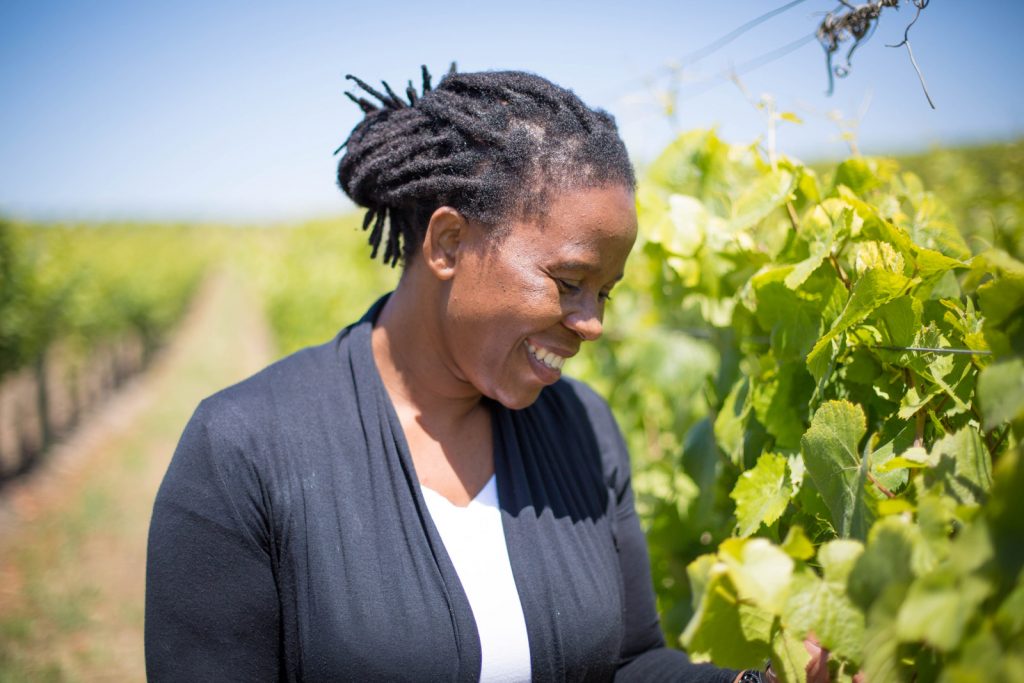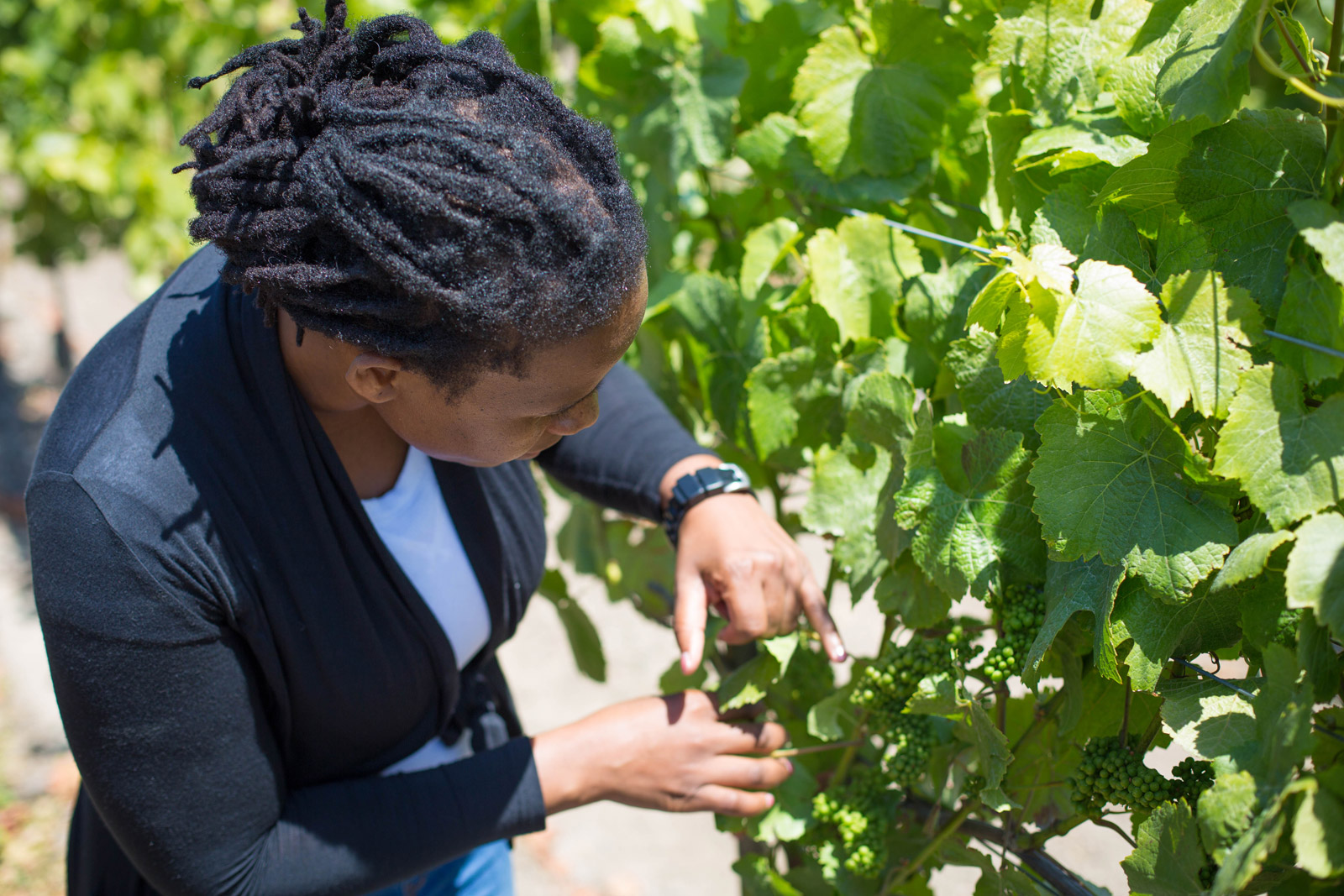Ntsiki Biyela Launches Aslina Wines
The first South African black, female winemaker’s latest palate-pleasing wonders

Remarkable stories seem to follow Ntsiki Biyela, South Africa’s first black woman winemaker. Perhaps that’s because she’s earned them—through hard work, dedication, a preternatural understanding of wines and an impressive four-wine release from her new brand Aslina. The dawn of her winemaking future hinged upon a scholarship from Stellenbosch University to study oenology. The program—which she entered in 1999, five years after the end of apartheid—covered four years’ worth of expenses despite her lack of experience, and drew her 16 hours from a rural village in the eastern province of KwaZulu-Natal to the school, 45 minutes outside of Cape Town. She had never seen grape vines before. She disliked the taste of red wine upon her first try. Winemakers in her program predominantly spoke Afrikaans, which she did not. Today, however, she’s an award-winning pioneer in a male-dominated industry who has worked across three continents.
After difficulties finding a position, Biyela was employed by Stellekaya Winery, located in South Africa’s Cape Winelands (near Stellenbosch). Her first harvest, in 2004, resulted in an award-winning wine—one that her grandmother back home would taste. Biyela has since spent 13 years as a winemaker and ambassador for Stellekaya wines. In 2012, NYC–based Wine for the World asked her to partner with Napa Valley’s Helen Kiplinger. The result, Suo, led to more awards—and the funds needed for Biyela to to start her own brand.

Four different wines comprise Aslina: a chardonnay, a sauvignon blanc, a cabernet sauvignon, and a bordeaux blend. Over dinner in Brooklyn’s Madiba with Biyela and Wine for the World founder Mika Bulmash, the winemaker explains, “I’ve been working with red wines. When I wanted to start my own company, I knew I wanted to do white wines as well as reds.” Reds interested her from a point of familiarity—whites, for their challenges. “I made a plan on how to approach it all. I knew I wanted to do a chardonnay because it’s bigger,” she continues. “Regarding the sauvignon blanc, I’m not into lighter versions. I want something substantial. I left the wine on the lees for 10 months. I tasted it and I knew.” On the lees means aging with the yeast and sediment still inside, resulting in a bigger wine—not a sweeter one.

For Biyela, conversation is key to it all—from growers to consumers. Regarding the former, she notes, “We work together. Once we start around September, I go visit the vineyards. We look at them together. They ask questions and we figure out next steps.” As for buyers, she explains that she’d like to talk to each and every one of them. Her wines are about tingling the tongue. “It gets the palate excited,” she says. “People who are wine drinkers, they get intimidated by the words winemakers use. I always want to tell them my story of tasting wine. When I tasted wine for the first time I just didn’t like it. That was my first experience. That’s an important memory. It does not matter what other people say that they pick up on the nose. It only matters what you’re picking up and you don’t need words for that.”

“I want the brand to grow but I want its soul to remain intact,” she explains. “I’m not going to put anything out that I feel will jeopardize this.” The debut run is limited to 12,000 bottles—2,500 of which are now a sold-out chardonnay of exceptional virtue. Some may still be found at Madiba. “The reason I started the company—it stands for something—I began because I knew there were things that I wanted to do not for myself but for other people. I named it after my grandmother because she’s been the core of my being, and my support.”
The company is going to give back to where I came from. I am where I am because someone gave me an opportunity.
Mentorship also plays a role at Aslina. “The company is going to give back to where I came from. I am where I am because someone gave me an opportunity,” Biyela says. “Since I started the brand, I knew that I wanted to bring in students. We recruit students and train then and help them with job placement. We hire students so they can get experience—and employment. People say you must be qualified in order to get experience. This is the system. Well, I am going to take people without experience and train them and allow them to move on and make space for others.”
Images courtesy of respective brands












